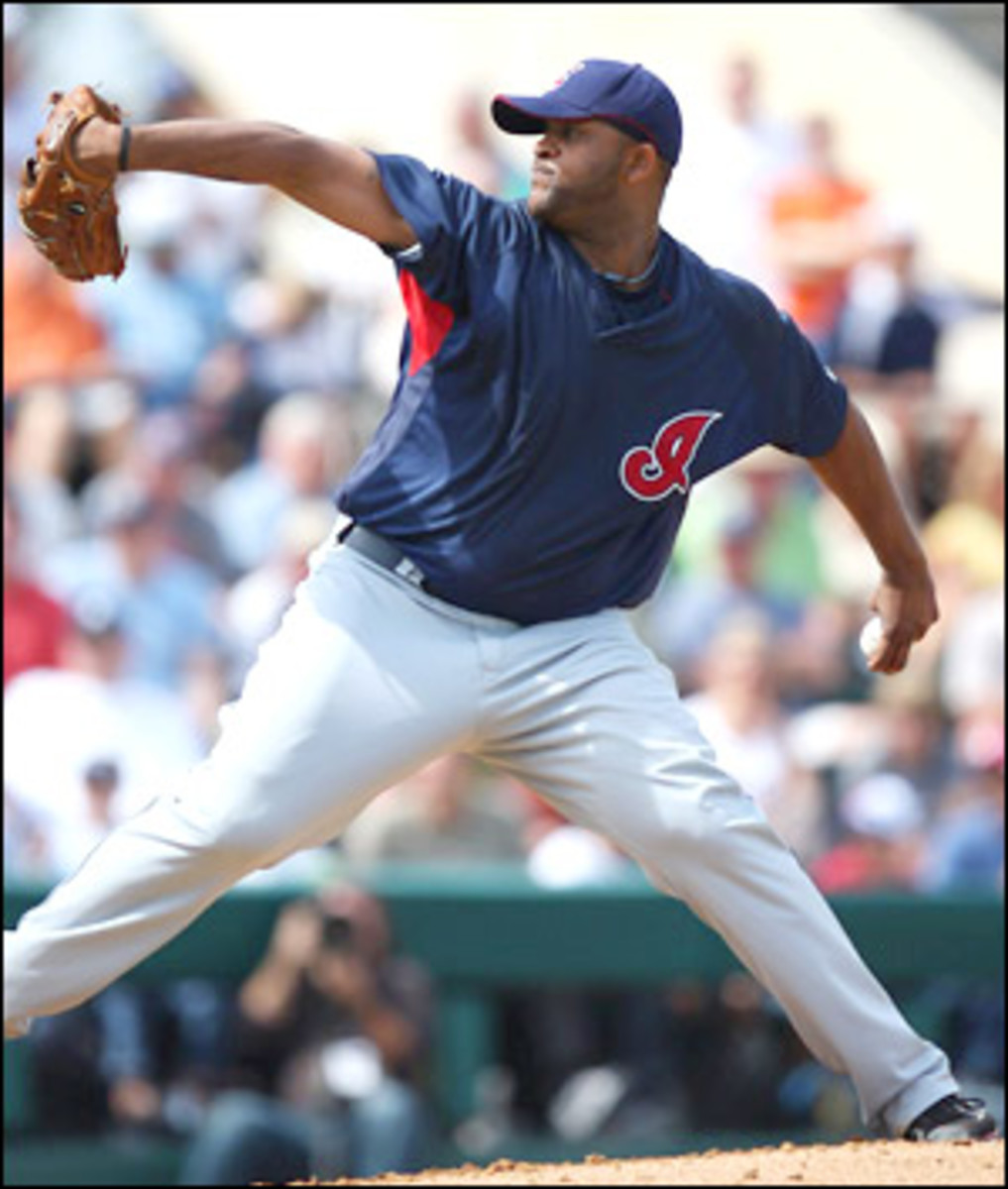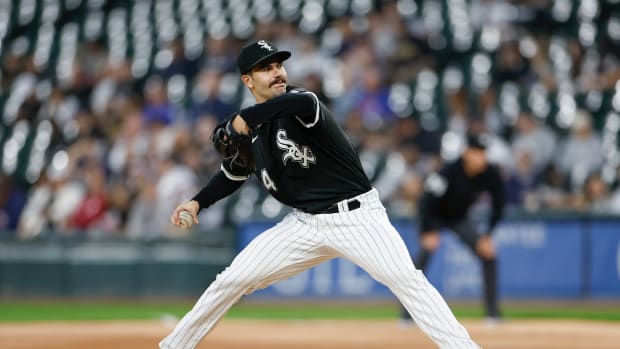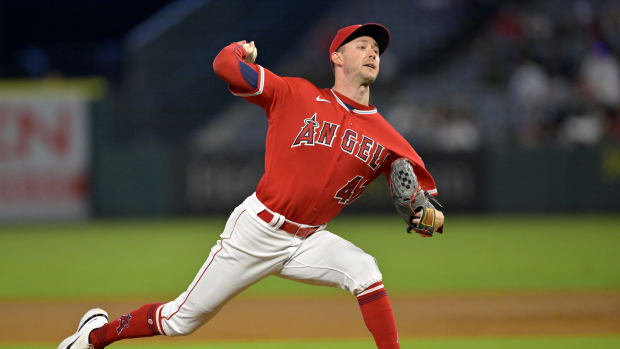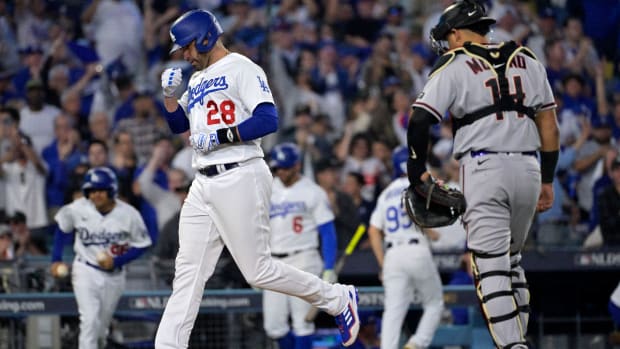
Little Town Blues
Only in Cleveland could the news that baseball's best pitcher had been traded out of both the division and the league be greeted with a sense of impending doom. Optimism is not the default state of mind for Clevelanders, so the reaction to the Feb. 1 deal that sent Johan Santana from the Minnesota Twins to the New York Mets focused not on the improved postseason chances of the Indians, who last year came within one win of reaching the World Series, but on the future of 27-year-old Indians ace C.C. Sabathia. The reigning American League Cy Young winner, who went 19-7 with a 3.21 ERA in 2007, is due to become a free agent next winter, and his prospects of commanding a deal too large for Cleveland to match seem more likely after Santana inked his record six-year, $137.5 million extension.
"The next person to stop at Seven-Eleven should pick up chips and dip for C.C. Sabathia's goodbye party," wrote The Plain Dealer's Paul Hoynes the day before the Mets finalized Santana's deal, expressing a sentiment that has been echoed ad nauseam in local papers, on talk radio and across the blogosphere for the past month. Of all the sports-related neuroses that Cleveland fans have developed in their 44 years without a major championship, perhaps the most overwhelming is their abandonment complex. After losing a football team and seeing sluggers like Jim Thome, Manny Ramirez and Albert Belle parade out of town, the city now panics at any hint of desertion. (Cleveland is still obsessing over the Yankees cap LeBron James wore to Jacobs Field during last year's playoffs.) "It's a traumatized fan base," says Indians G.M. Mark Shapiro. "You're looking at a city that has come close but hasn't won that elusive championship in a long, long time. In a passionate sports town, any player who puts that [potential championship] at risk becomes another addition to that trauma."
Sabathia rejected Cleveland's offer of a four-year contract for about $68 million in late December, and he raised the threat level on Feb. 14, when he announced on his website that he planned to suspend negotiations until after the season. But Shapiro insists that Sabathia's funny valentine does not necessarily portend the end of his Indians career. "I am still optimistic that when everything is known about what's out there," he says, "we'll be able to provide a competitive deal, and he'll place a premium on being here and choose to stay."
Shapiro could just be in denial, but perhaps he's not. He is looking ahead to a deep free-agent market for pitchers next year, possibly including John Lackey, Ben Sheets, Brad Penny, Rich Harden, A.J. Burnett, Oliver Perez, Derek Lowe, John Smoltz and Pedro Martinez, and that might hold down Sabathia's price. Another reason for Cleveland to hope, says one mid-market general manager, is that the Santana deal was an exceptional case. The price the Mets paid for the finest talent of this generation won't necessarily realign the broader market. "C.C. is one of the best young starting pitchers in the game, and he's going to get paid a lot of money," the G.M. says, "but there are not a lot of teams that want to spend $20 million a year for one player."
Shapiro, whose Indians had the eighth- lowest payroll in the majors last year, at $61.7 million, can also argue that Cleveland's offer is in line with extensions given to San Diego's Jake Peavy (three years, $52 million) and the Cubs' Carlos Zambrano (five years, $91.5 million), aces whose stats are comparable with Sabathia's over the past five seasons. (Zambrano has 77 wins and a 3.30 ERA; Peavy has 70 wins and a 3.19 ERA; Sabathia, who's a year older than the other two, has 70 wins and a 3.61 ERA.) And while Sabathia has shown similar durability to the others -- they all rank in the top 18 in innings pitched since 2003 -- potential suitors, concerned about how his body will hold up in his 30s, might balk at making a big-money, long-term commitment to a 6' 7", 290-pound pitcher.
Also on Cleveland's side is that the team's immediate future is bright. The Indians' other stars, including centerfielder Grady Sizemore, DH Travis Hafner, catcher Victor Martinez, shortstop Jhonny Peralta and starter Fausto Carmona, are signed through 2010, suggesting at least two more years of contention beyond this season. Observes Detroit Tigers outfielder Curtis Granderson, who last month signed a five-year, $30.25 million extension, "A change of scenery is not always the best thing, and he's in a very good situation right now."
As for the possibility of dealing Sabathia at the trade deadline should the Indians not prove competitive this season, Shapiro has yet to address how open to that he would be. But he'll probably have to listen to offers. "They've done well before by trading guys like that," notes a rival G.M. "They traded Bartolo Colon [at the 2002 deadline] and they ended up getting Sizemore and Brandon Phillips and Cliff Lee, and I'd assume they'd do that again."
Sabathia, who is from Vallejo, Calif., has often noted his allegiance to the team that drafted him at 17 -- when he was a tyke of 6' 6" and 235 pounds -- and in his Feb. 14 statement said that he was finished commenting on his contract situation until after the season to "avoid any distractions." Still, last week he told SI, "Everybody knows how I feel about this organization, this team, the guys in here. I play my heart out every time I go out there for this city, and hopefully we can get something done after the season."
For a town that has famously seen its river burn, here's an optimistic view of Cleveland's situation -- anything is possible.


































